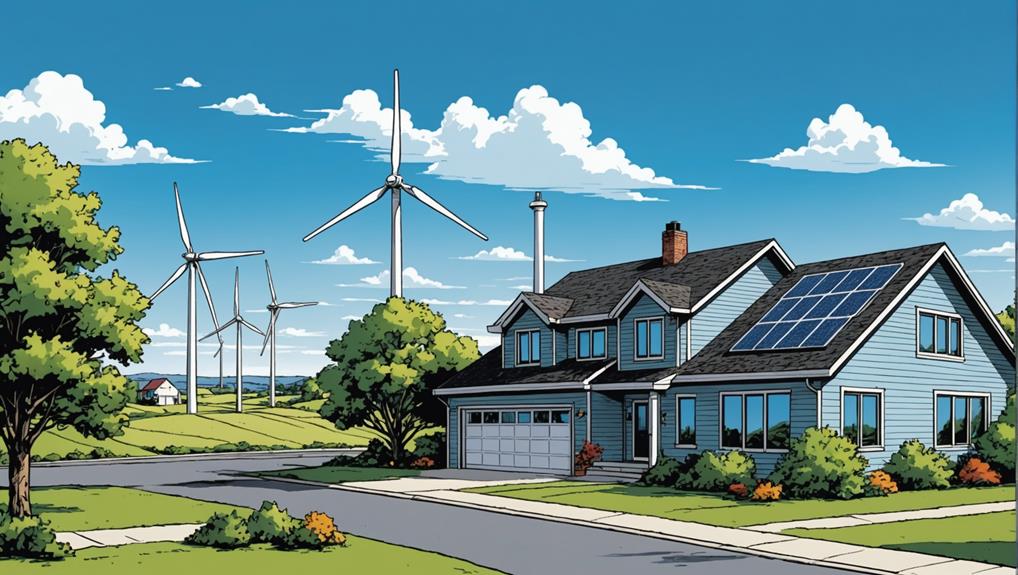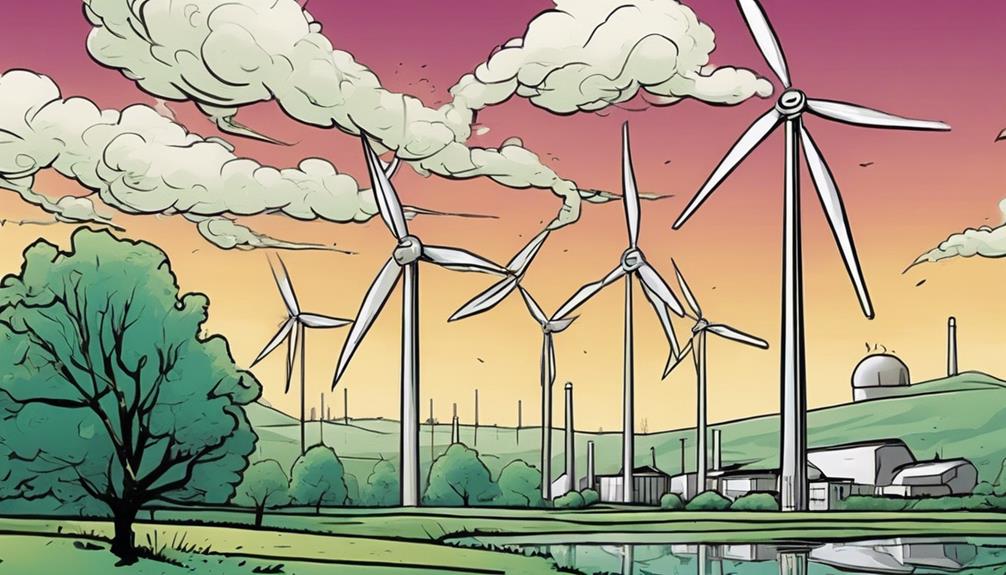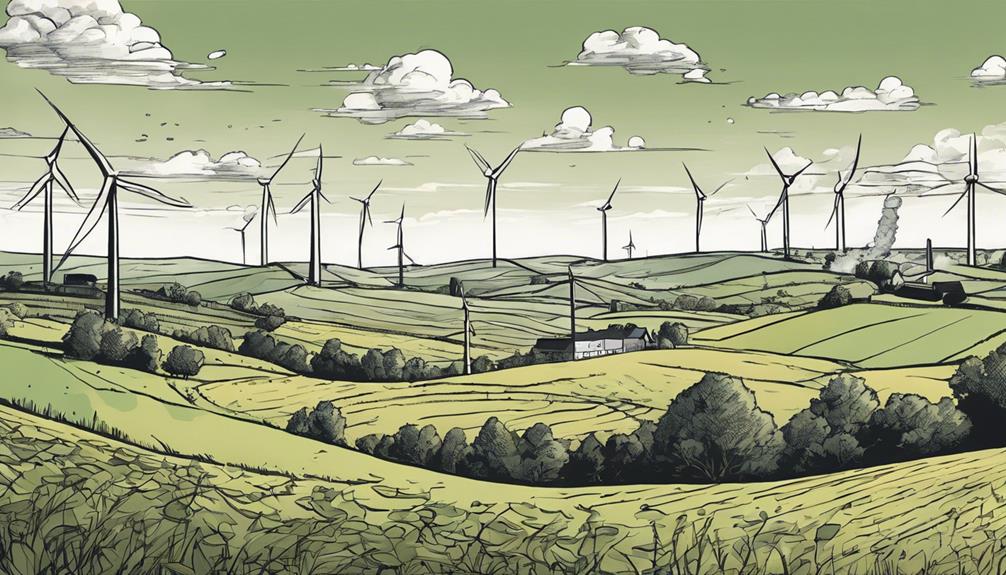To get a wind turbine or wind farm on your property, look into lucrative lease agreements, consider how your property size affects lease payments, understand land requirements, maintain your turbines properly, learn about installation processes and costs, and make well-informed decisions based on various cost considerations and energy output estimations. The process involves multiple steps and considerations that can help you maximize the benefits of wind energy on your property.
Key Takeaways
- Evaluate property size for turbine suitability and lease payments.
- Contact wind energy companies for lease agreements and installation.
- Consider turbine size, site selection, and energy needs assessment.
- Ensure proper maintenance for longevity and peak performance.
- Seek professional installers for safe and efficient turbine installation.
Wind Farm Lease Agreements
When considering wind farm lease agreements, landowners can expect to negotiate terms that include a signing bonus, annual turbine payments, and royalties for their property. The lease value for landowners averages around $8,000 per year per turbine, with larger turbines potentially generating higher payments ranging from $50,000 to $80,000 annually. These agreements offer a significant financial opportunity for landowners looking to utilize their property for wind energy production.
By leasing their land to wind farm developers, landowners can benefit from a steady stream of income while contributing to renewable energy initiatives.
Understanding the terms of wind farm lease agreements is vital for landowners to make sure they're receiving fair compensation for the use of their property. Factors such as property size, proximity to infrastructure, and land use can influence the final lease amount negotiated. It is, therefore, important for landowners to carefully review and negotiate the terms of the lease agreement to maximize the potential benefits of hosting wind turbines on their land.
Property Size and Lease Payments
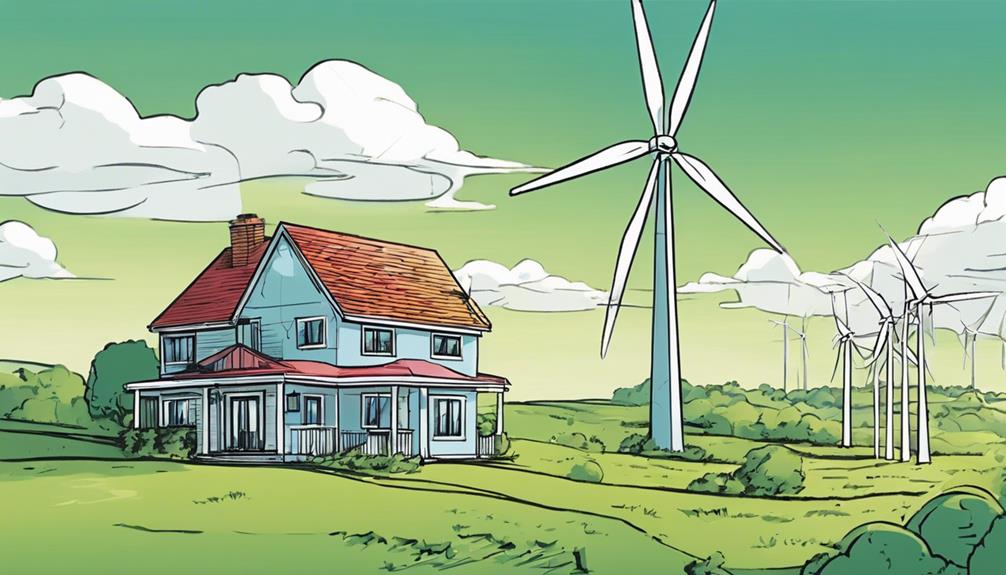
When considering hosting a wind turbine on your property, remember that property size matters. Larger properties are more suitable for wind farms and can potentially yield higher lease payments.
Understanding the correlation between property size and lease payments is essential for making an informed decision about wind energy opportunities on your land.
Lease Payment Factors
The size of your property directly influences the lease payment you can expect for hosting a wind turbine. Larger properties typically command higher wind turbine lease payments due to their potential for accommodating multiple turbines.
Additionally, the proximity of your property to infrastructure such as roads, transmission lines, and substations can impact the overall lease agreement value. Landowners often receive signing bonuses when entering into wind turbine lease agreements, along with annual turbine payments and royalties.
Lease payments for wind turbines can vary widely, ranging from $50 to $200 per acre annually. On average, a single wind turbine can generate around $8,000 per year for the landowner. Larger turbines have the potential to yield significantly higher annual lease values, with some reaching between $50,000 to $80,000 per year based on factors like property size and wind turbine capacity.
Property Size Importance
Larger properties play a significant role in determining the lease payments you can expect for hosting wind turbines on your land. When it comes to wind turbine installations and wind farms, property size matters. The size of your land can impact the financial benefits you receive from lease payments. Wind developers consider larger properties more suitable for hosting wind farms due to the potential for multiple turbines and increased energy production.
Lease payments for wind power on your property can vary based on factors such as property size and wind resource potential. Wind developers often offer lease payments ranging from $50 to $200 per acre per year. Additionally, incentives like signing bonuses and royalties may further boost your earnings.
Land Requirements for Turbines
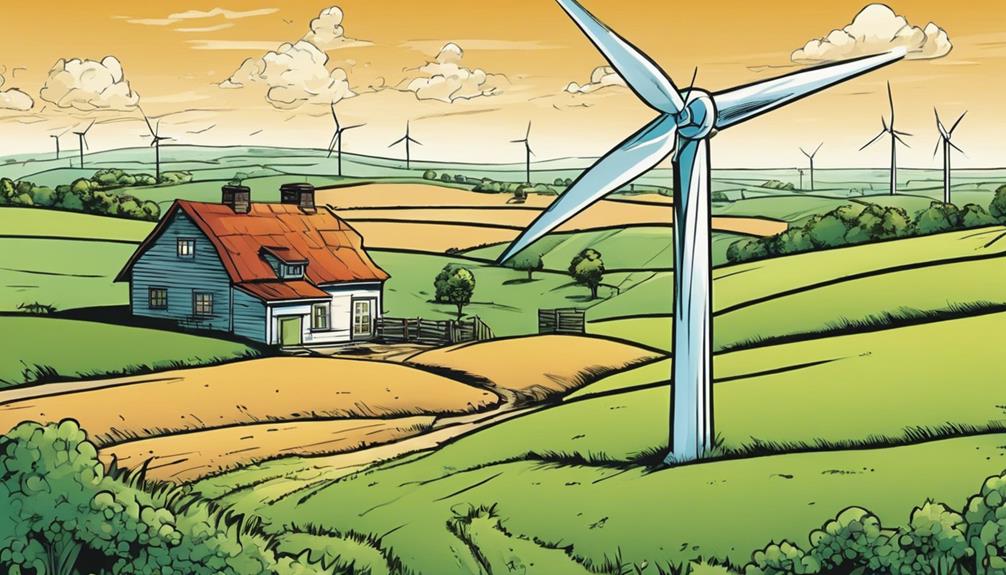
When considering installing a wind turbine at your residence, it's important to account for the land requirements. Turbines typically need around half an acre per turbine, along with additional space for access roads and maintenance.
The suitability of your property regarding consistent wind speeds and minimal obstructions will also play a key role in maximizing energy production.
Turbine Land Size
Considering ideal positioning, wind turbines typically need half an acre to one acre of land each, along with space for access roads and safety clearance. The size of the land required for turbines is influenced by factors such as wind resources, zoning regulations, and the type of turbine being used.
Larger turbines may need more land due to setbacks that are 1.1 to 1.5 times the height of the turbine from property lines or inhabited structures. Wind farm developers carefully assess land availability to guarantee optimal positioning for maximum energy production.
Property owners who lease their land for wind turbines can benefit from additional payments for road access, material storage, and temporary structures. Understanding the land requirements for turbines is essential for both developers and property owners to ensure efficient and safe operation of wind energy projects.
Property Suitability
To determine if your property is appropriate for installing wind turbines, it's imperative to assess the land requirements and proximity to essential infrastructure.
When evaluating property suitability for wind turbines, consider the following factors:
- Land Requirements: Wind turbines typically need 1/2 to 1 acre of land per turbine for proper spacing and operation.
- Access Roads: Access roads are vital for transporting equipment and conducting maintenance on the turbines.
- Setbacks: Adequate setbacks from property lines are necessary to guarantee safety and compliance with regulations.
- Proximity to Transmission Lines: Being close to transmission lines, roads, and substations can affect the feasibility of installing wind turbines on your property.
Longevity of Wind Turbines
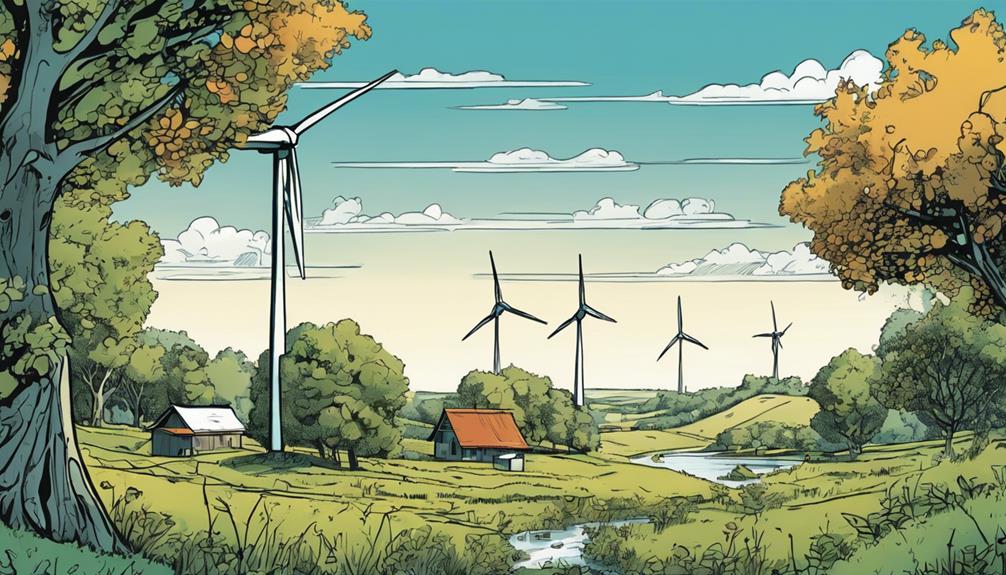
Wind turbines have a typical lifespan of 20-30 years, with longevity influenced by environmental factors and regular upkeep practices. To guarantee the longevity of your wind turbine and maximize its renewable energy benefits, proper maintenance is key.
Regular checks and maintenance tasks such as tightening bolts and electrical connections can extend the life of the turbine. Annual maintenance is pivotal for peak performance and to prevent any potential issues that could shorten its lifespan.
Investing in a professional installer and diligently following the manufacturer's guidelines are essential steps to help increase the longevity of your wind turbine. By prioritizing maintenance and choosing a reputable installer, you can greatly enhance the lifespan of your wind turbine, allowing you to enjoy sustainable energy production for years to come.
U.S. Wind Turbine Installations
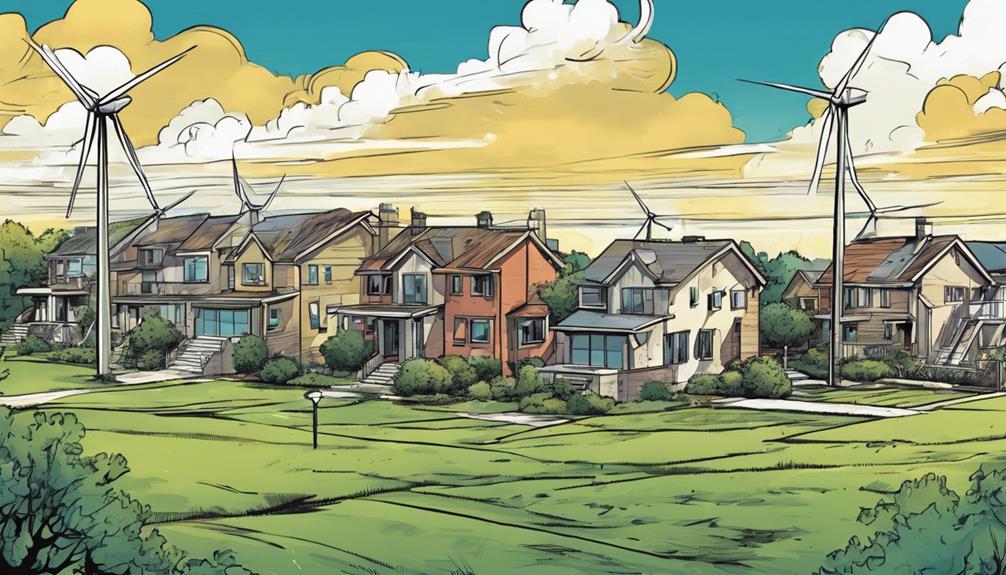
If you're considering installing a wind turbine at your house, it's significant to understand the installation process and cost considerations.
Wind turbine installations in the U.S. involve specific steps and financial factors that you should be aware of before making a decision.
Learning about the installation process overview and cost considerations is vital for making an informed choice about incorporating wind power into your home.
Installation Process Overview
How do professional installers typically approach setting up wind turbines in the U.S.?
Professional installers follow a systematic approach to guarantee efficient and safe wind turbine installations.
- Site Selection:
Professional installers carefully choose the installation site based on factors like wind availability, tower maintenance access, and existing obstacles.
- Installing a Wind Turbine:
The professional installer sets up the wind turbine, verifying all components are correctly assembled and securely fastened.
- Annual Maintenance:
Regular maintenance is conducted, including inspecting bolts and electrical connections, and monitoring system performance for early issue detection.
- Grid Connection for Complex Installations:
In cases of complex installations, professional installers conduct thorough testing before connecting the wind turbine to the grid.
Cost Considerations
Considering the average wind power purchase agreements ranging from 2-3 cents per kilowatt-hour in the U.S., understanding the cost considerations for wind turbine installations is essential for making informed decisions. When looking to install home wind turbines, it's vital to factor in the initial setup costs, ongoing maintenance expenses, and potential savings on electricity bills. As prices fall and technology advances, investing in wind power has become more accessible for homeowners seeking to generate their electricity from wind.
| Cost Consideration | Description |
|---|---|
| Initial Setup Costs | Expenses for purchasing and installing the turbine, including permits and site preparation. |
| Ongoing Maintenance | Regular upkeep to ensure the turbine functions efficiently and lasts for its intended lifespan. |
| Potential Savings | The amount of money you could save on electricity bills by generating power from the wind. |
Small Wind System Installation
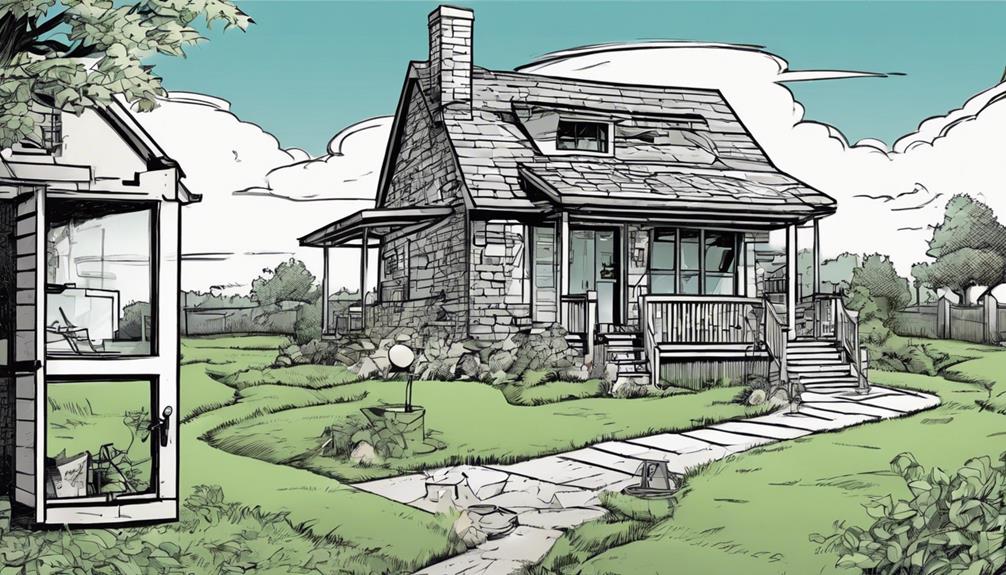
Professional installers can assist in determining the most suitable location for your small wind system based on factors like wind resource, geological formations, and existing obstacles.
When installing small wind turbines, consider the following:
- Turbine Size: Choose the right turbine size based on your energy needs and available space.
- Grid Connection: Connect your wind system to the grid for efficient energy distribution.
- Annual Maintenance: Schedule regular maintenance checks to keep your system running smoothly and effectively.
- Professional Installers: Seek professional help for the installation process to ensure safety and peak performance.
Siting and System Sizing
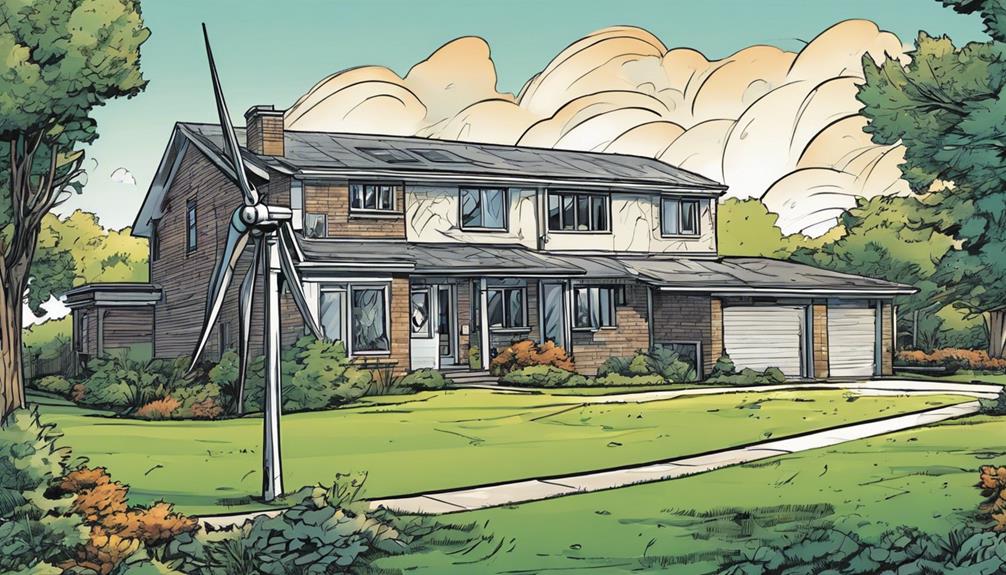
When deciding the location and size of your wind system, focus on selecting the best spot and equipment specifications for effective energy generation on your property. Expert installers play a significant role in site selection, considering factors such as wind resource, geological formations, and existing obstacles. It's vital to leave sufficient space for tower maintenance and guy wires when positioning wind turbines to guarantee safety and accessibility.
During system sizing, precise calculations for turbine size, tower height, and energy efficiency needs are critical. Expert installers can help estimate the annual energy output by examining the turbine power curve, wind speed, and tower height. They assist in optimizing system sizing to maximize the energy generated on your property.
Take into account wire run length and losses to ensure a smooth installation of wind systems.
Energy Output and Grid Connection
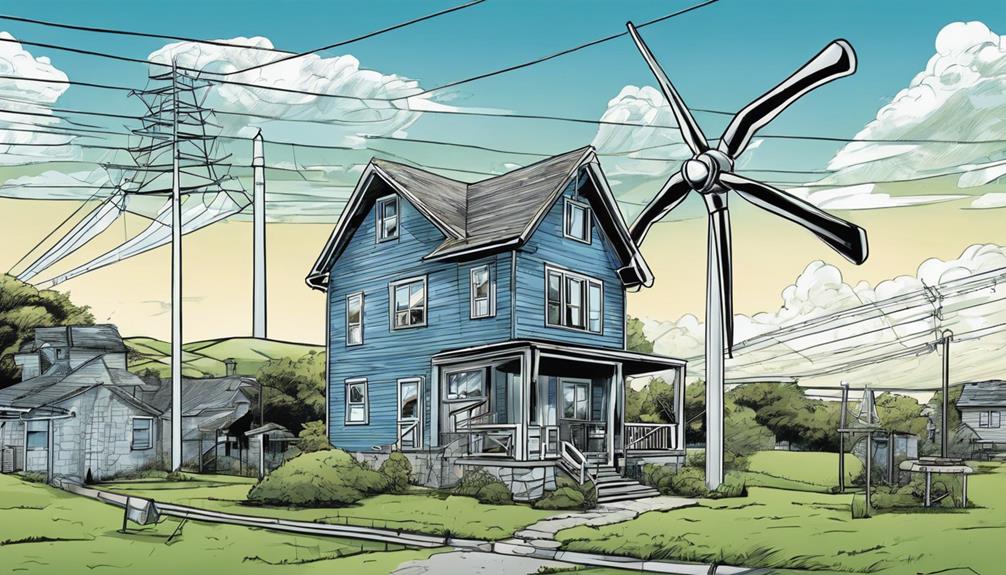
Estimating the annual energy output of your wind turbine system is necessary for determining its suitability based on factors like wind speed and the turbine power curve.
When considering energy output and grid connection for your wind turbine system, there are key points to keep in mind:
- Grid-connected systems enable a reduction in utility-supplied electricity consumption and offer credits for excess electricity fed back into the grid.
- Calculations for energy production estimates should account for site elevation and adjustments to make sure more accurate projections.
- Proper grid connection is essential for efficiently utilizing wind energy, thereby reducing utility costs through the utilization of self-generated electricity.
- Grid-connected wind turbines provide a sustainable energy solution by harnessing wind power to effectively meet household electricity needs.
Site Selection and Equipment
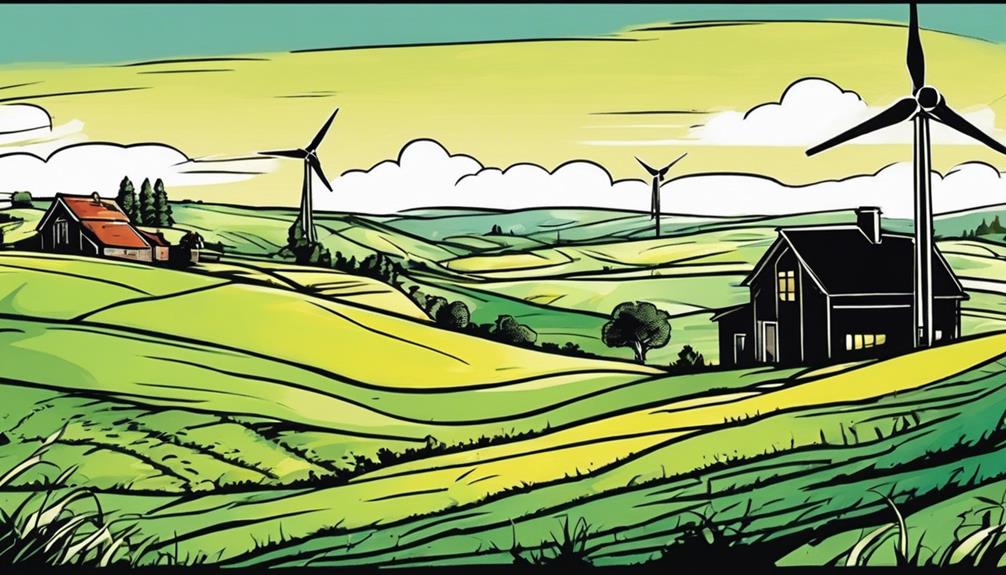
Choosing the best location for your wind turbine system involves evaluating factors such as wind resource, geological features, and potential obstacles. Professional site evaluation is critical to guarantee peak performance.
Calculate your energy needs accurately and assess the average wind speeds in your area to select the appropriate wind turbine for maximum efficiency. Consider site conditions such as available space for tower maintenance and guy wires before installation. It's crucial to leave room for tower access and safety when planning the layout.
When selecting equipment, opt for a wind turbine that suits your site conditions, and invest in high-grade components to ensure durability and efficient energy production. Superior components can enhance the longevity and performance of your wind turbine system, making it a dependable source of renewable energy for years to come.
Installation, Maintenance, Troubleshooting

Properly following installation guidelines is crucial for guaranteeing the safety and efficiency of your wind turbine system.
To maintain the functionality of your wind turbine or wind farm on your property, consider the following key points:
- Regularly inspect, clean, and monitor the wind turbine to detect and address issues early on.
- Test the wind system thoroughly before connecting it to the grid to troubleshoot any potential problems.
- Consider hiring a professional installer for complex installations to secure proper grounding and tower stability.
- Maintain spare parts for quick repairs and establish a strict maintenance schedule to address common issues like blade erosion and wiring problems.
Frequently Asked Questions
Can I Put a Wind Turbine on My Property?
You can put a wind turbine on your property after checking local regulations and evaluating wind resources. Factors like wind speed, land availability, and noise levels play a role. Urban or rural, with planning, wind energy is possible.
How Much Does the Government Pay You to Put a Wind Turbine on Your Property?
When you put a wind turbine on your property, the government doesn't typically pay you. However, you might qualify for federal tax credits covering up to 30% of the installation cost, along with state incentives.
How Much Does It Cost to Put Wind Turbine on Your House?
Putting a wind turbine on your house can cost between $5,000 to $50,000 depending on size and type. Additional factors like tower height and permitting impact costs. On average, small wind turbine installation ranges from $10,000 to $75,000.
Can You Get Wind Turbines for Your Home?
You can definitely get wind turbines for your home. They come in various sizes and costs. Before diving in, make sure your area has adequate wind speeds and be prepared for potential permit requirements.
How Can I Promote Wind Energy at My Home or Property?
One way to promote wind energy at your home or property is to develop a solar public relations strategy. This could involve spreading awareness in your community about the benefits of wind energy, hosting informational events, or collaborating with local organizations to advocate for renewable energy.
Conclusion
So, you want a wind turbine or wind farm at your house? Well, good luck with that! While it may seem like a breezy idea, the process is actually quite complex and not as straightforward as it appears.
From lease agreements to property size requirements, there's a lot to take into account. But hey, who knows? Maybe one day you'll be harnessing the power of the wind right in your own backyard. Just don't hold your breath!
